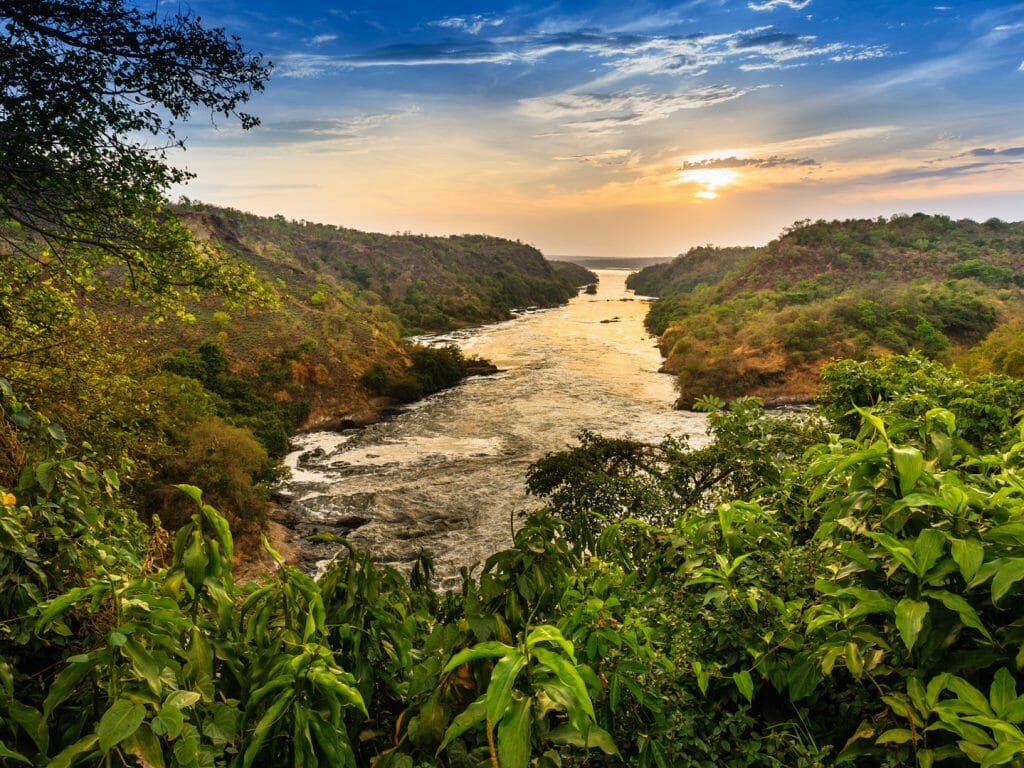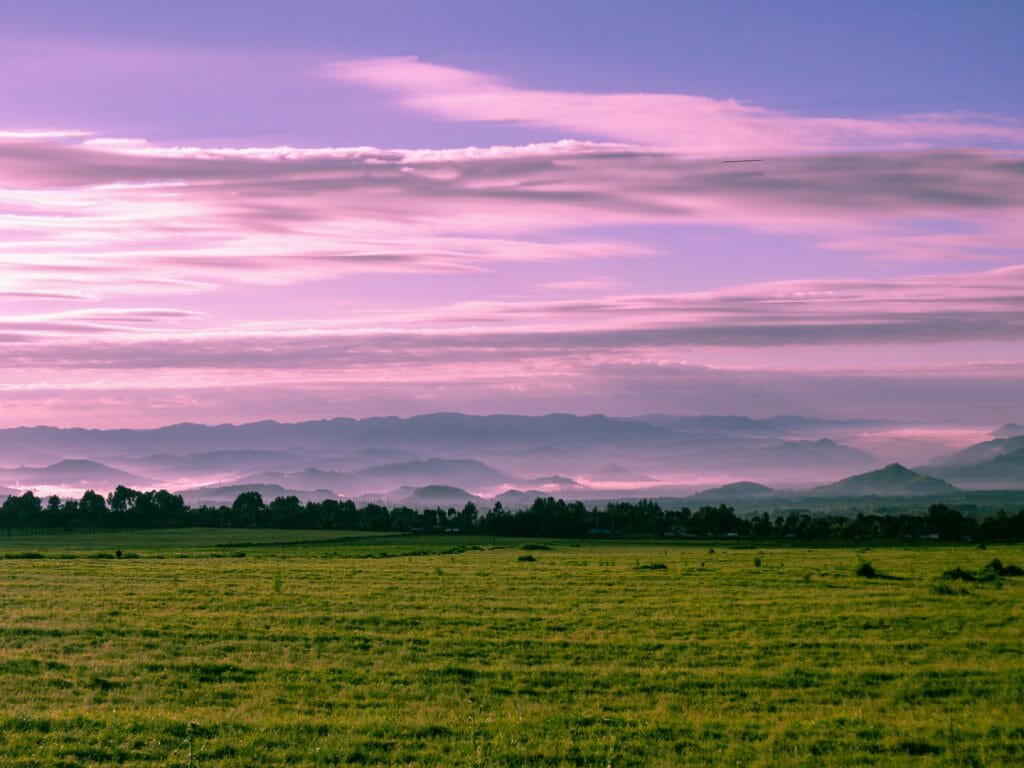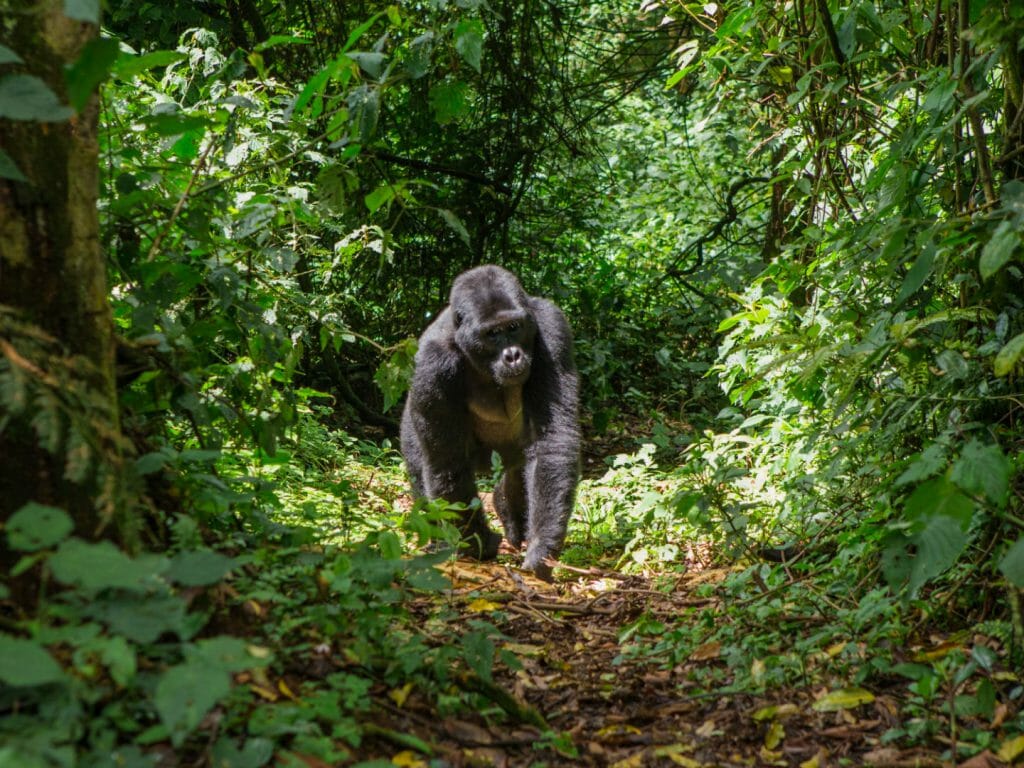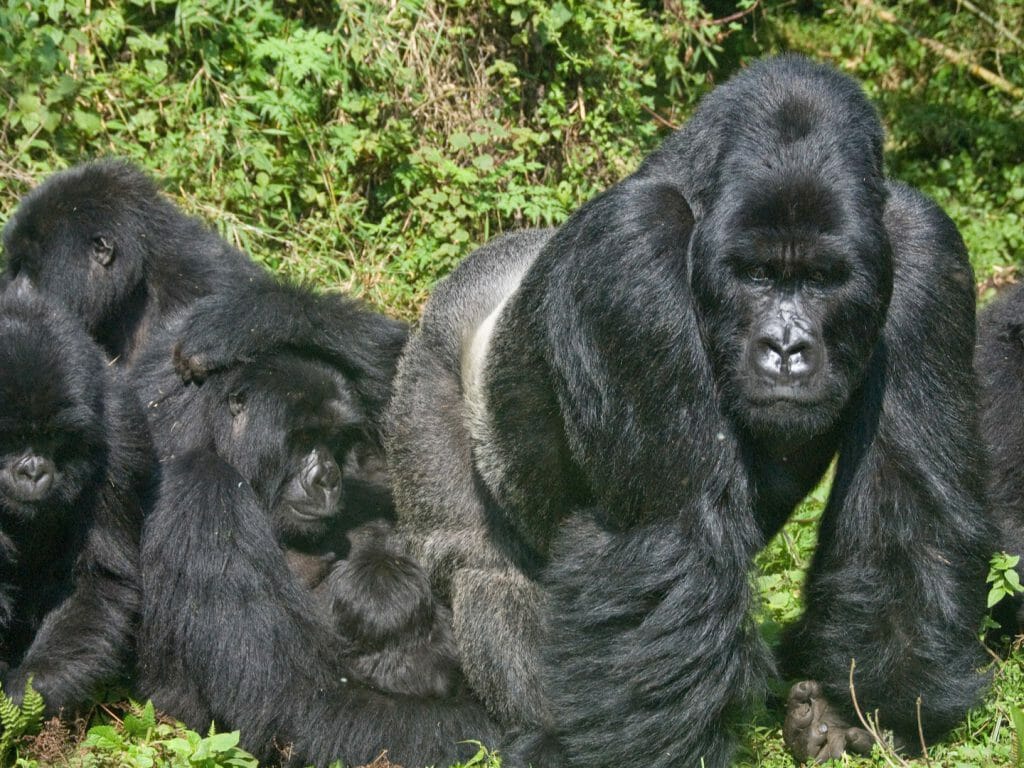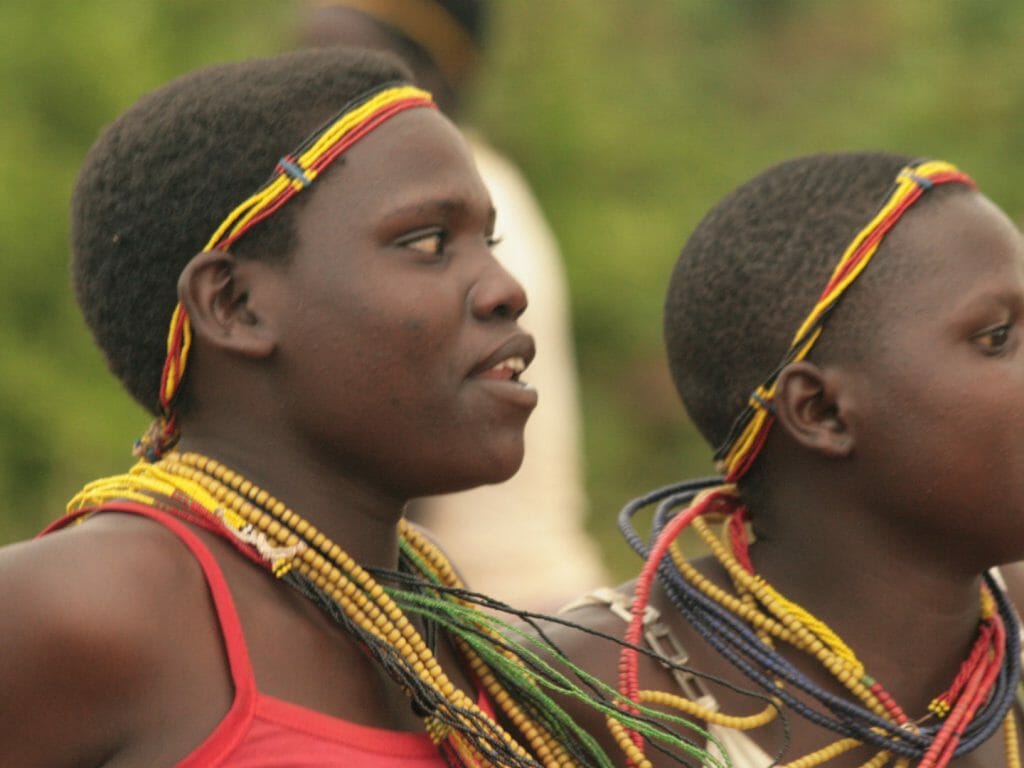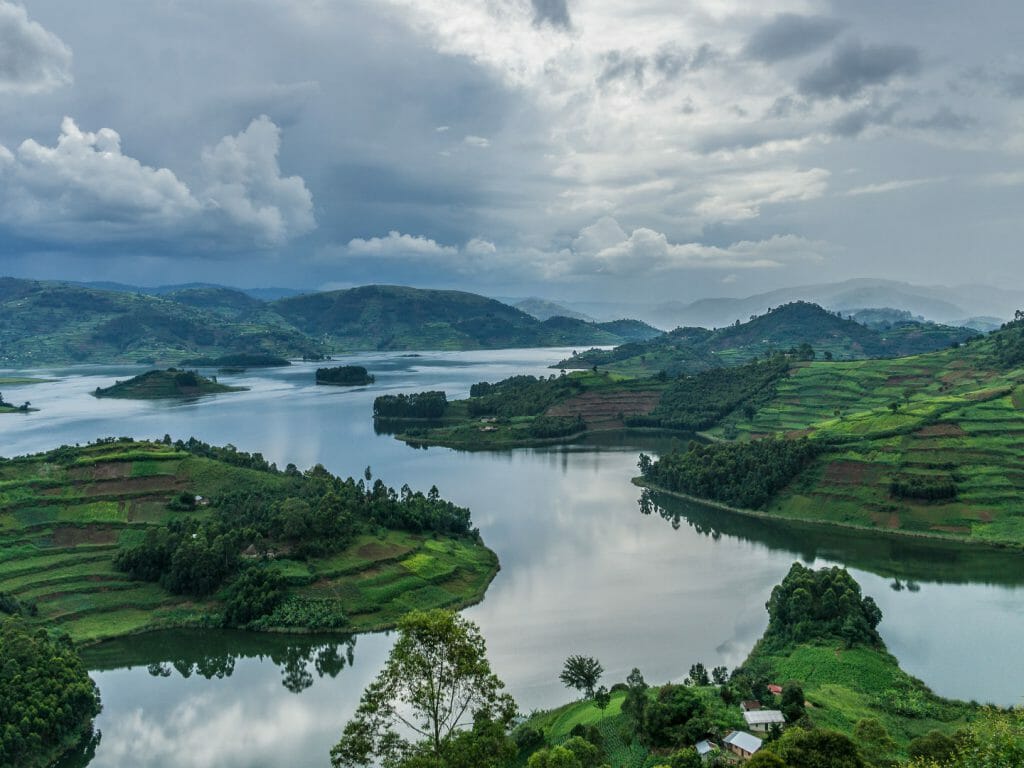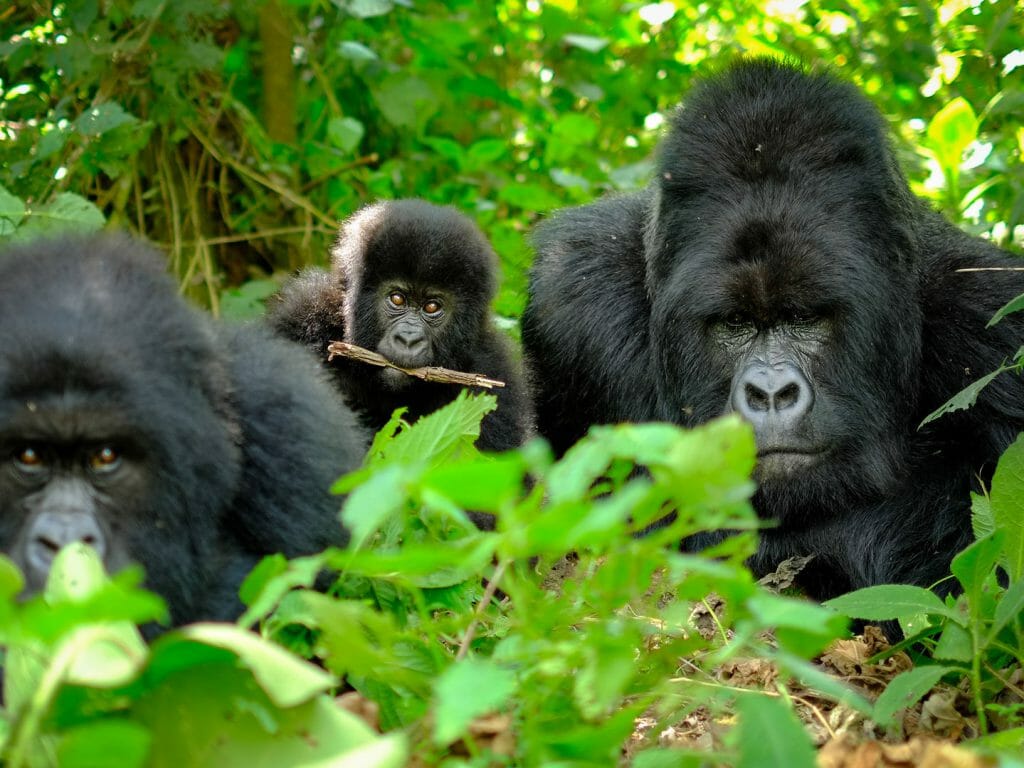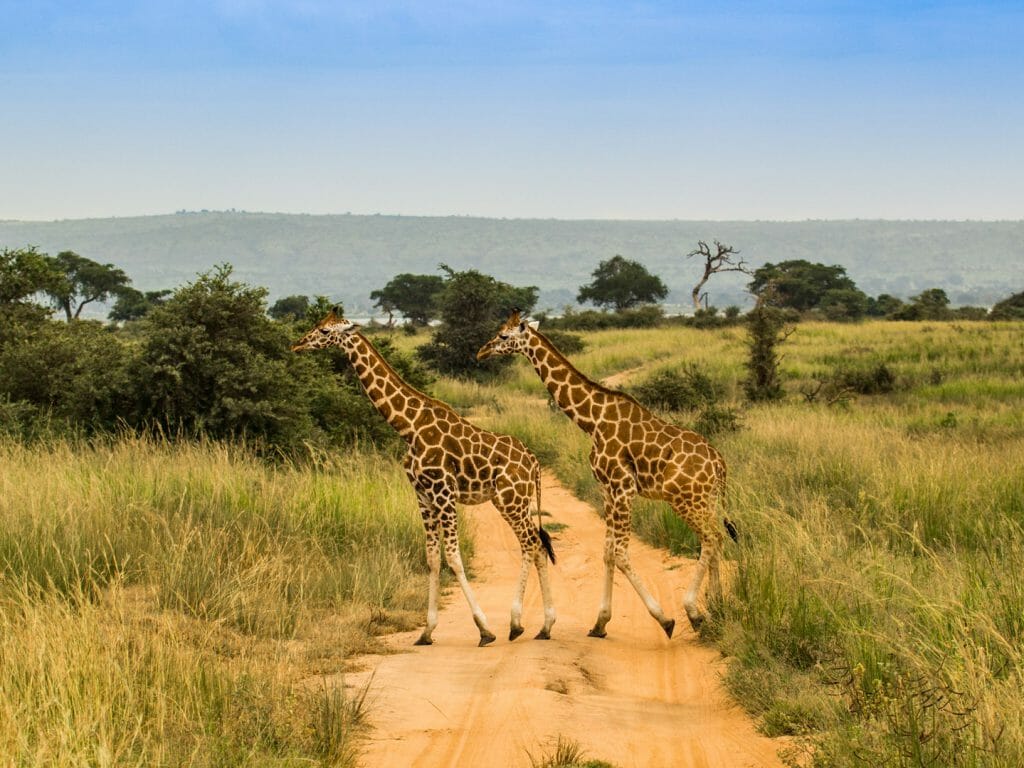“Yesterday, today and tomorrow.” Our guide Elias slowly pronounces each word with the edifying manner we are quickly becoming accustomed to. I trace along his outstretched finger towards a large flowering plant, hues of blue and indigo, pierced with white blooms, a waiver from his preferred subject, birds, but a welcome one.
I’m in Uganda, the pearl of Africa. Seconds earlier we had been bumping along the untarmacked road, red dust billowing out from beneath the trusty Land Cruiser’s tyres, this is Murchison Falls National Park, Uganda’s largest national park.
The day is young, but our list of sightings is already growing, Jackson’s Hartebeest, oribi, buffalos and Ugandan kobs. There are birds aplenty and I reach for a copy of Stevenson’s guide, the vade mecum for any birder in East Africa, for assistance. But with over 450 species in this park alone, my fingers cannot flick the well-thumbed pages fast enough.
Thankfully Elias is on hand, masterly identifying each and every bird. His trained eye, pinpointing with laser precision the smallest movement on distant branches – piapiac, carmine bee-eaters, Heuglin’s francolin, Abyssinian ground hornbills, and veracious doves, several more species are identified before I’ve even spotted them.
Fortunately, I can’t miss the six-metre-tall giraffe standing in the middle of the road as we round a bend, its doe-eyed expression turning to surprise. Gracefully, the rangy long legs make way for us, its giant stride carrying away the burnt umber splattered mosaic in the direction of a nearby acacia tree, the tufted ossicones brushing the clouds as it walked.
Rothschild’s giraffes are amongst the key attractions to be found in the park and numbers are growing. Over 1,500 now roam north of the Nile in Murchison, the majority of the global population. Such a concentration, however, leaves the sub-species exposed and efforts are underway to spread the giraffes’ range to new locations south of the Nile.
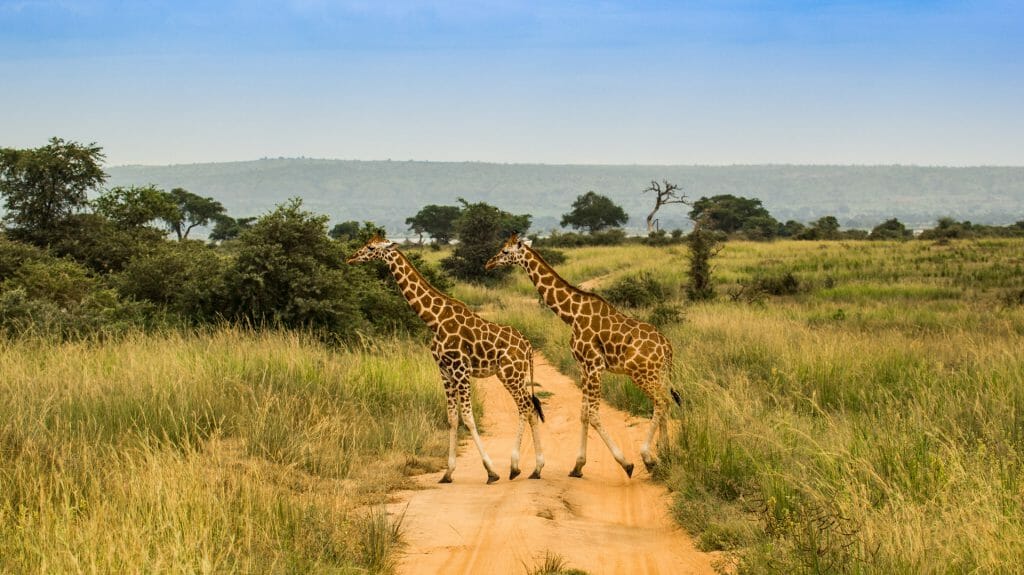
Murchison has oil and a large road construction into the park is underway to exploit it. Hopefully, the animals can live alongside the development or today’s long necks of Murchison risk being replaced by those of nodding donkeys.
Herds of buffalo come into view and the curved horns of sleeping kob give away their position in amongst the vegetation. From beneath a Borrasus palm, the low euphony of an elephant’s sonorous rumble is broken by the cracking of branches as the rest of his family lumbers noisily into view.
A small group of skittish kobs break from their herd, white bobbing tails fleetingly flashing before me as they leap across the road, thew and sinew tense their flaxen sides shimmer as their svelte elegant lines cut the sun’s morning rays, and dive hastily to the safety of longer grasses.
As we draw closer to Lake Albert the ground opens up, tussocks of grass surrounding dried out pools, the sun is up now and our camera clicks more sporadic, it feels like the best of the mornings game drive is done, but it isn’t, not just yet.
This might be my first trip to Africa, but I’m travelling with experienced Africaphiles on the lookout for something new, who, having drawn a blank at Mabamba Swamp the day before had laid down the gauntlet to Elias.
And there it was – our early Christmas present, Elias victorious. Half dinosaur, half bird with a clog for a beak, one of Uganda’s most sought-after sightings sitting right in front of us, the shoebill. What the Mabamba Swamps couldn’t provide. Murchison Falls can.
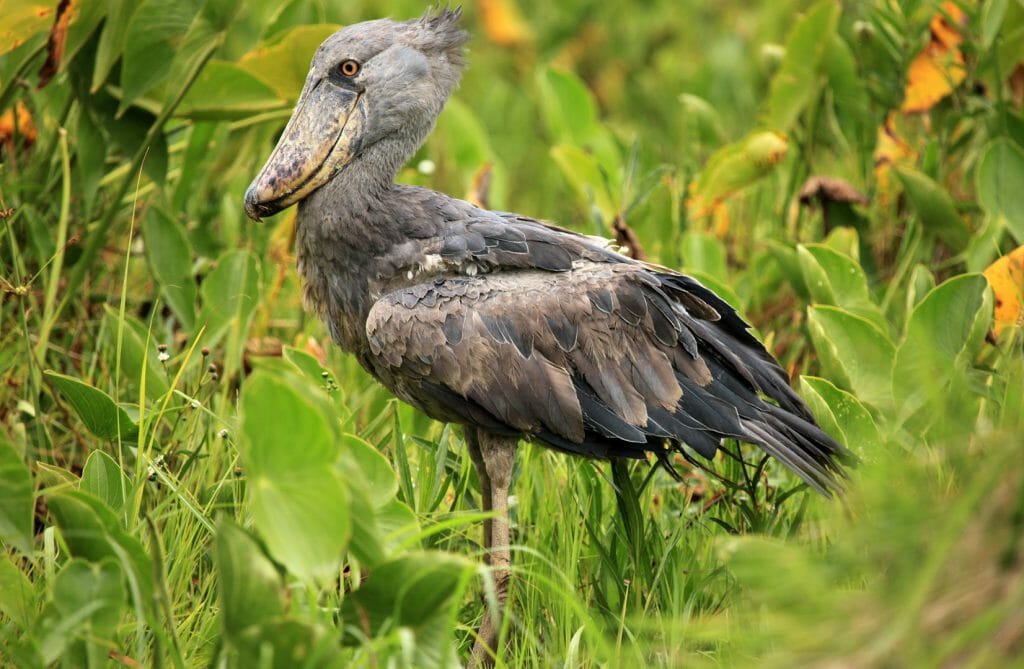
We rush to grab cameras we had by now discarded resuming the synchronised clicking, desperate to capture frames before this typically shy bird takes flight. However, rather than scarper, it seems intrigued by the clicking, raising itself to its full 5 ft and taking a step towards us. Then another. Head tilting each time another camera clicked. Seemingly realizing he is on show, we are offered a full catwalk display, feathers on show, wings outstretched. I’m poised ready for the second he takes flight, but the moment never comes and having finished his show, he nonchalantly returns to his starting place and sits back down to rest.
The afternoon brings more adventures, Nile beer in hand we head up the Nile to the base of Murchison Falls, hippos, elephants and crocodiles lining the banks as the boat zips by. The noise of the falls grows, and the water begins to froth as we draw closer.
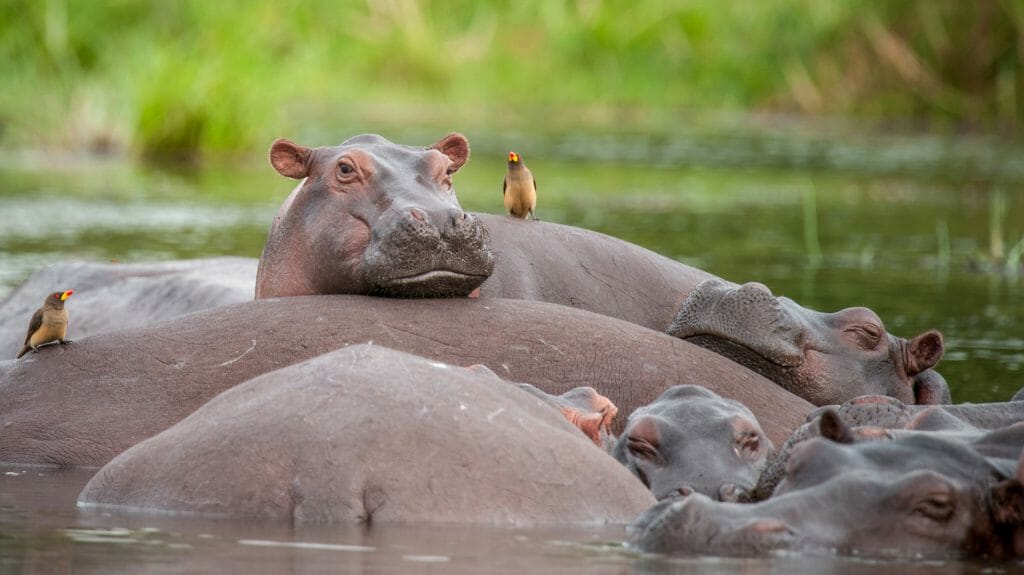
The view from the boat is stunning, but the plan was to climb up for a closer look. The sun now searing above I look up at the winding steps through the trees to the top of the falls and slowly begin to climb.
As we reach the top and stand near the edge my legs can feel the tremors of the torrent reverberating through the stone. The thunderous flow of water squeezing itself through the six-metre narrow channel of rocks, roaring angrily at the inconvenience of being held up on its way downstream.
Sadly, the chance to see and feel this incredible natural wonder might soon be gone. An application has been made to turn the falls into a Hydropower dam, with untold consequences to the park’s wildlife, including its shoebills, no wonder the river sounds so angry.


